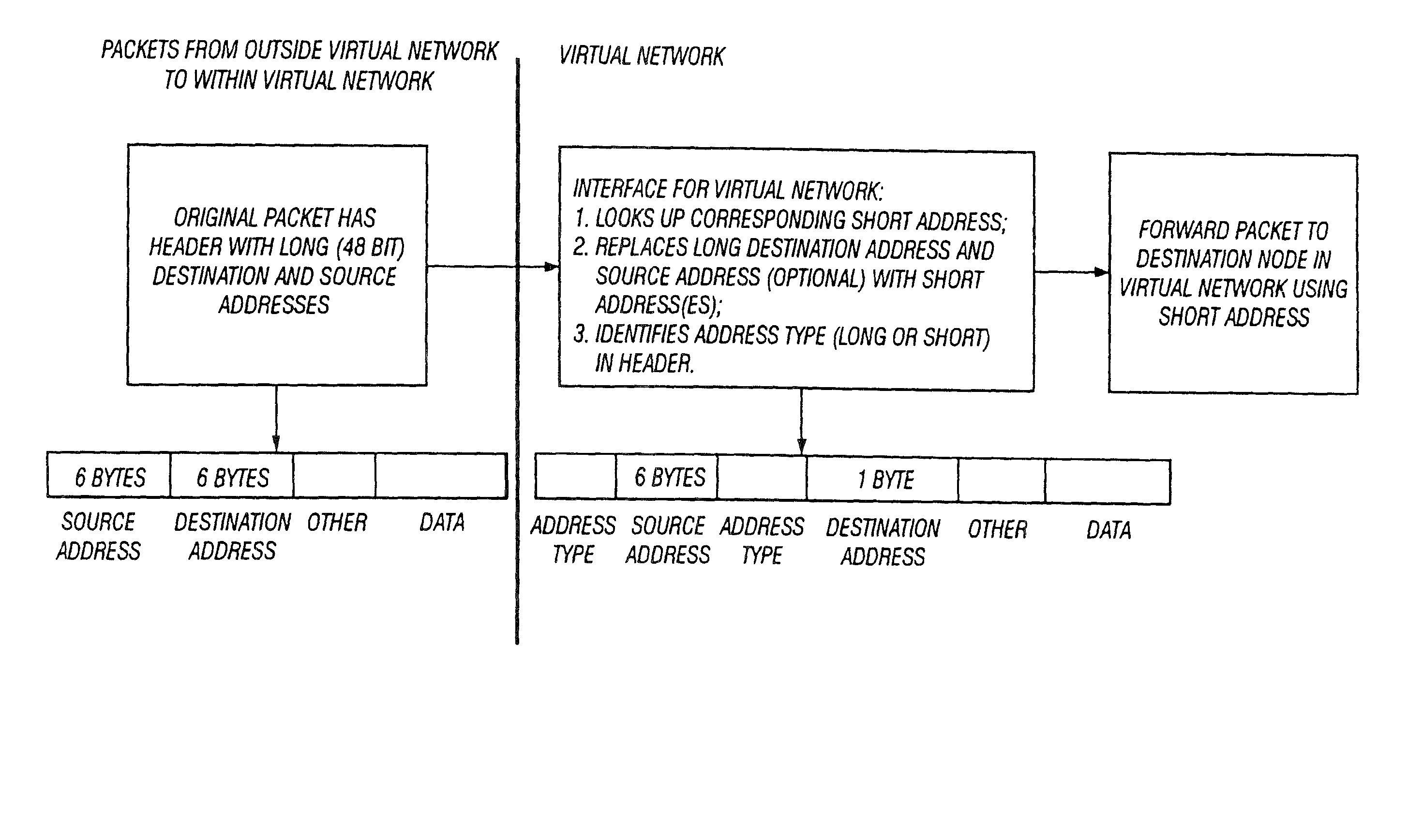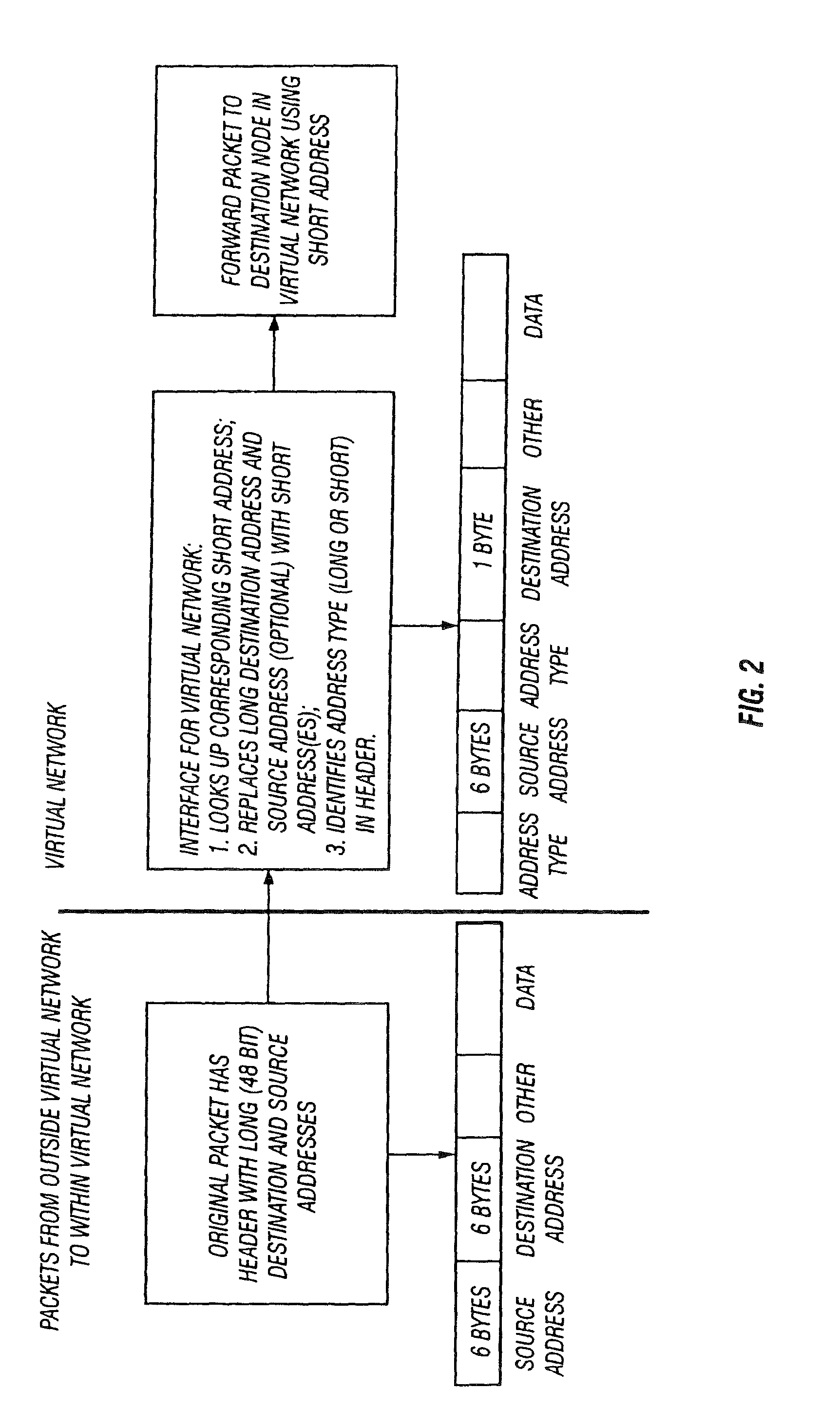Automatic network topology identification by nodes in the network
a network topology and automatic technology, applied in the field of communication networks, can solve the problems of ineffective topology storage at any device, inability to identify other devices on the network, inability to carry data, etc., and achieve the effects of reducing overhead, increasing data carrying capacity, and reducing overhead
- Summary
- Abstract
- Description
- Claims
- Application Information
AI Technical Summary
Benefits of technology
Problems solved by technology
Method used
Image
Examples
Embodiment Construction
The inventions described herein provide a flexible, dual addressing mechanism for devices in a defined virtual network topology. The devices within the virtual network may be routing / multiplexing devices with a short / long address translation mechanism. The entire virtual network may be private in the sense that it is isolated from the external world by a routing device or set of routing devices with a short / long address translation mechanism. Thus, the term “virtual network” could apply equally to, for example, the nodes of a metropolitan area fiber ring or a private corporate network isolated behind a corporate router. Virtual networks can optionally utilize private addressing (not visible to the rest of the world). For example, use of a specific header containing such addresses may be limited to use within the virtual network.
In addition, the inventions described herein provide a general topology discovery mechanism (not specific to virtual networks) that is reliable and that does...
PUM
 Login to View More
Login to View More Abstract
Description
Claims
Application Information
 Login to View More
Login to View More - R&D
- Intellectual Property
- Life Sciences
- Materials
- Tech Scout
- Unparalleled Data Quality
- Higher Quality Content
- 60% Fewer Hallucinations
Browse by: Latest US Patents, China's latest patents, Technical Efficacy Thesaurus, Application Domain, Technology Topic, Popular Technical Reports.
© 2025 PatSnap. All rights reserved.Legal|Privacy policy|Modern Slavery Act Transparency Statement|Sitemap|About US| Contact US: help@patsnap.com



